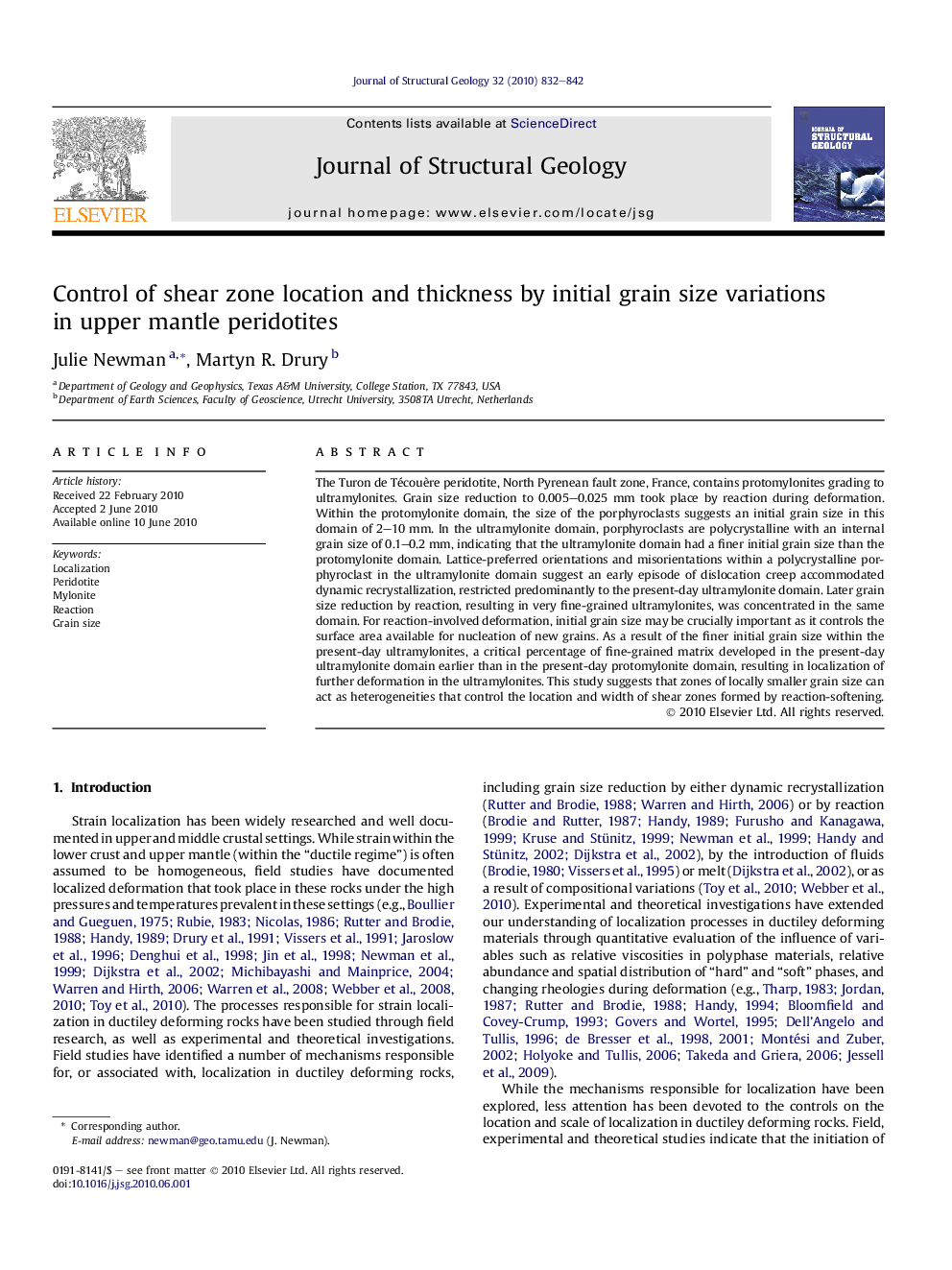| Article ID | Journal | Published Year | Pages | File Type |
|---|---|---|---|---|
| 4733344 | Journal of Structural Geology | 2010 | 11 Pages |
The Turon de Técouère peridotite, North Pyrenean fault zone, France, contains protomylonites grading to ultramylonites. Grain size reduction to 0.005–0.025 mm took place by reaction during deformation. Within the protomylonite domain, the size of the porphyroclasts suggests an initial grain size in this domain of 2–10 mm. In the ultramylonite domain, porphyroclasts are polycrystalline with an internal grain size of 0.1–0.2 mm, indicating that the ultramylonite domain had a finer initial grain size than the protomylonite domain. Lattice-preferred orientations and misorientations within a polycrystalline porphyroclast in the ultramylonite domain suggest an early episode of dislocation creep accommodated dynamic recrystallization, restricted predominantly to the present-day ultramylonite domain. Later grain size reduction by reaction, resulting in very fine-grained ultramylonites, was concentrated in the same domain. For reaction-involved deformation, initial grain size may be crucially important as it controls the surface area available for nucleation of new grains. As a result of the finer initial grain size within the present-day ultramylonites, a critical percentage of fine-grained matrix developed in the present-day ultramylonite domain earlier than in the present-day protomylonite domain, resulting in localization of further deformation in the ultramylonites. This study suggests that zones of locally smaller grain size can act as heterogeneities that control the location and width of shear zones formed by reaction-softening.
